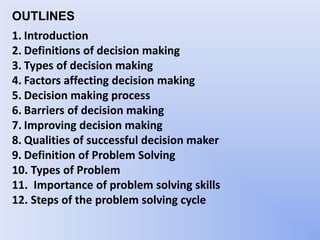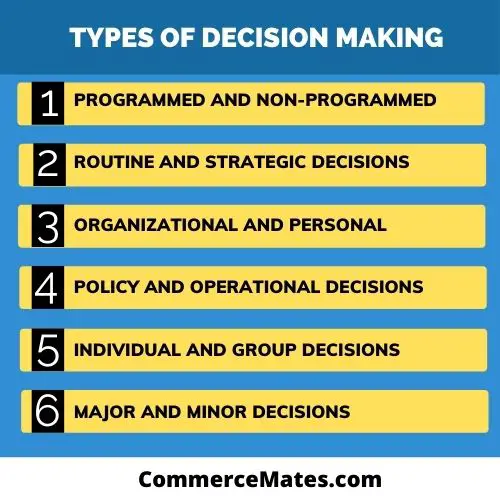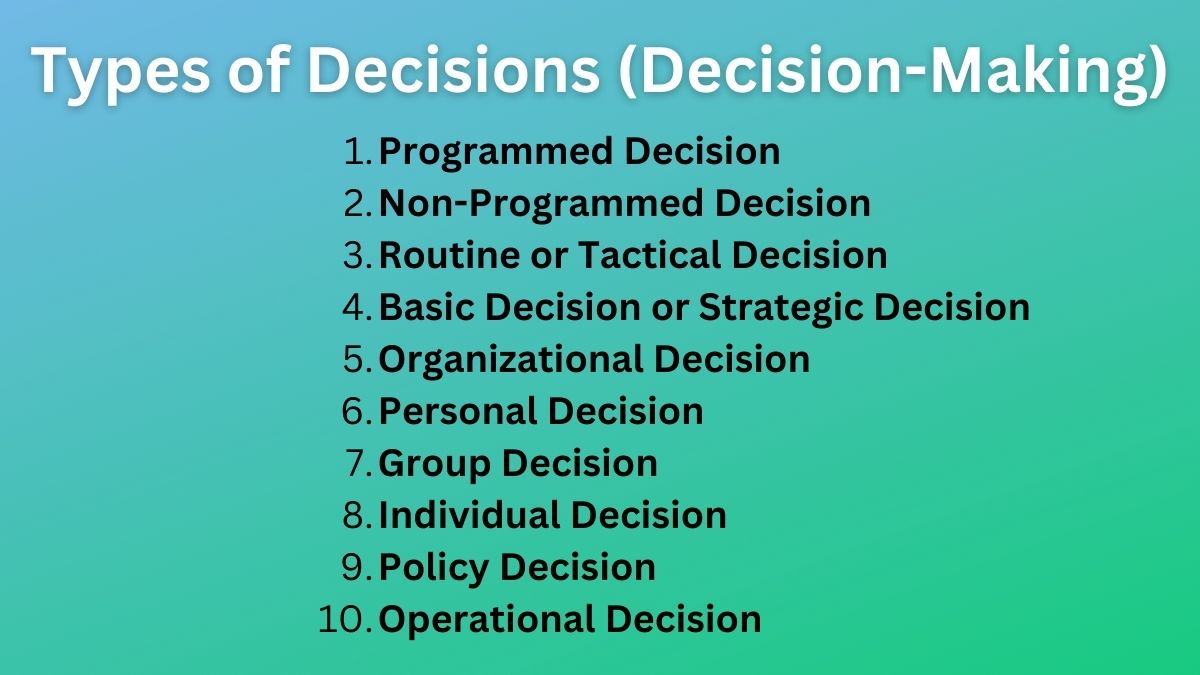Decision making is a crucial part of the functioning of any organization, as it involves choosing the best course of action based on available information and resources. There are various types of decision makers, each with their own unique approach to problem-solving and decision-making. In this essay, we will explore four types of decision makers: autocratic, democratic, consultative, and consensus.
Autocratic decision makers rely on their own expertise and authority to make decisions. These individuals tend to have a strong sense of conviction and are confident in their ability to make the right choices. They are often found in leadership positions and are comfortable making decisions without seeking input from others. While autocratic decision makers can be effective in certain situations, they may also be perceived as dictatorial and may face resistance from team members who feel left out of the decision-making process.
Democratic decision makers, on the other hand, involve team members in the decision-making process and encourage open communication and collaboration. These individuals value the input of others and believe that the collective wisdom of the group can lead to better decisions. Democratic decision makers are often seen as fair and inclusive, but the decision-making process may be slower as it involves gathering input from multiple sources.
Consultative decision makers seek input from a select group of individuals before making a final decision. These individuals may consult with team members, subject matter experts, or other stakeholders before making a choice. Consultative decision makers value the insights and perspectives of others, but ultimately have the final say on the decision. This approach can be effective in situations where a decision needs to be made quickly, but input from key individuals is still valued.
Consensus decision makers seek to build agreement among all team members before making a final decision. This approach involves extensive discussion and negotiation to reach a decision that is acceptable to all parties involved. Consensus decision making can be effective in building buy-in and commitment among team members, but it can also be time-consuming and may not be practical in situations where a quick decision is needed.
In conclusion, there are various types of decision makers, each with their own strengths and limitations. The appropriate decision-making style will depend on the specific situation and the needs of the organization. It is important for decision makers to be aware of their own decision-making style and to consider the best approach for each situation.









